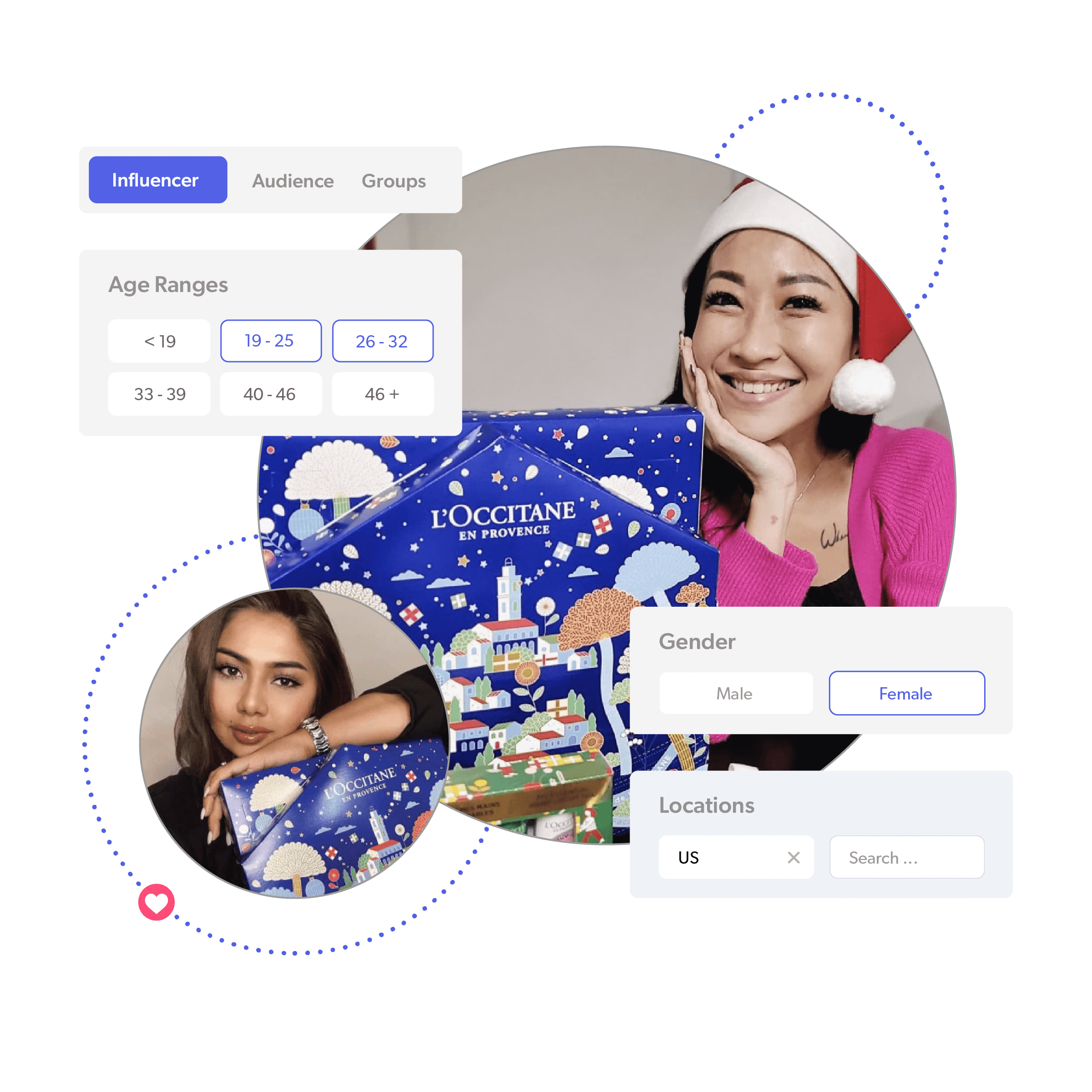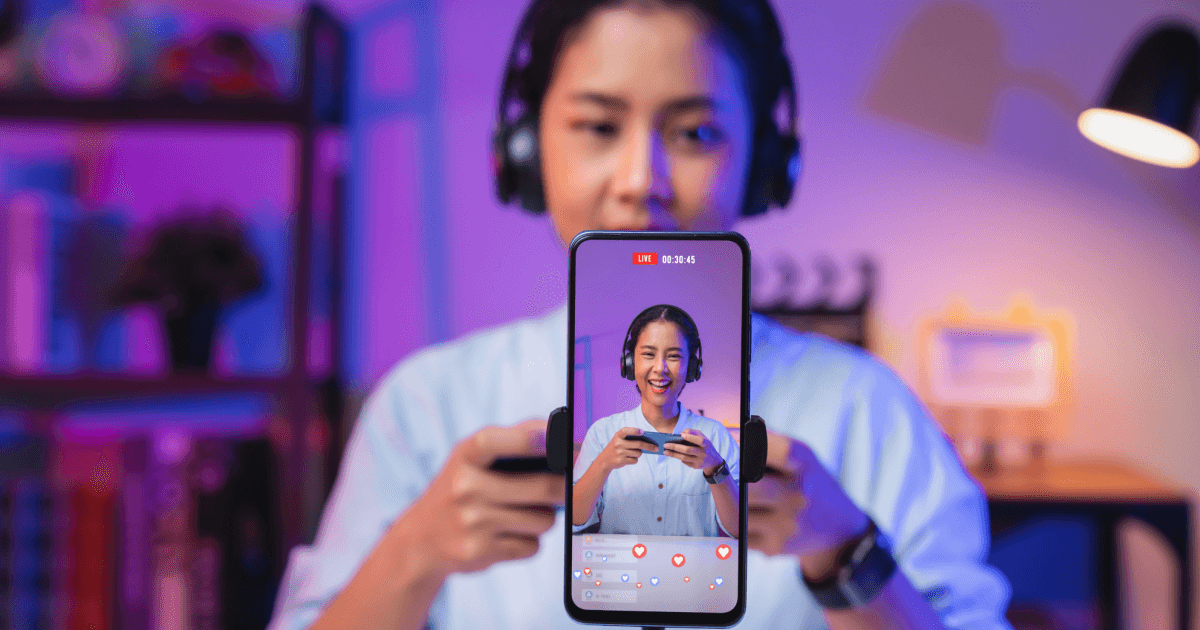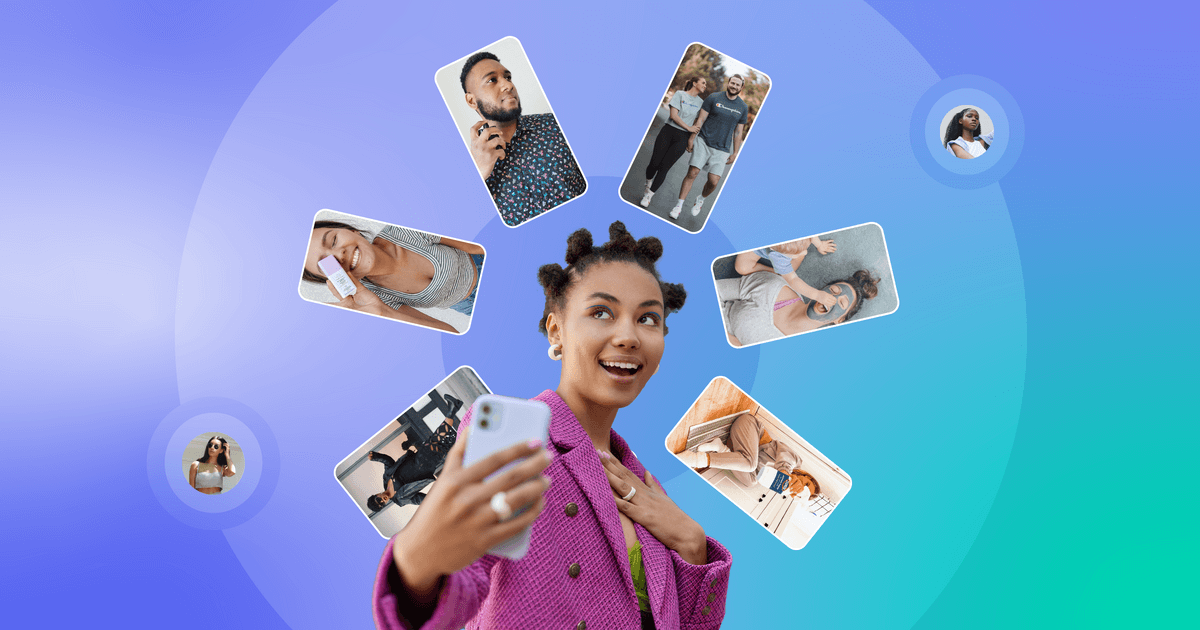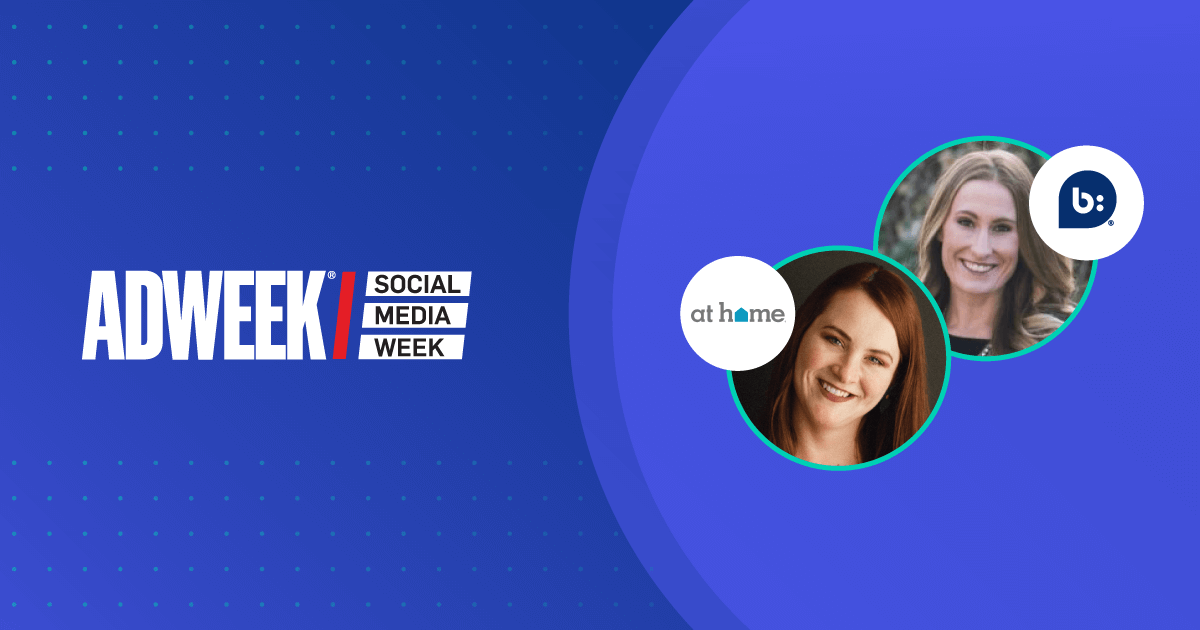October 9, 2024
Are you thinking about using influencers to boost your brand’s reach? Or do you want to find content creators who can kick your content game up a notch, bringing in real conversions — not just on social media but also on your e-commerce store and website?
Finding these content creators might feel a bit like searching for a needle in a haystack because, let’s face it, they’re everywhere nowadays. And then there’s the challenge of figuring out if they’re legit, if their followers are genuine, and how well they’ll align with your brand values. Not to mention identifying who has the potential to connect with the most significant chunk of your target audience — all crucial factors to consider when you’re looking to find a squad of content creators.
But let’s simplify this whole process of how to find the right content creators, and who can weave an outstanding tale around your product or service, all in their authentic storytelling style.
Different methods and tools are available to unearth these influential voices and vet them based on their social presence, audience demographics, brand affinity, and more.
What are content creators?
Content creators are individuals who produce and share material such as videos, blogs, photos, and social media posts to engage and influence their audience, often collaborating with brands to promote products and services. They can make a trend go viral and spark purchase decisions by opening new engagement channels.
Every year, we’re further witnessing this shift toward valuable, authentic content that’s driven by creators. It’s kind of a big deal. The creator economy, valued at $250 billion this year, is expected to almost double, reaching a whopping $480 billion by 2027.
The reason being: research shows that we believe in the recommendations given by our peers before buying a product. For example, 89% of shoppers consult ratings and reviews before making a purchase. Content creators play a similar role because of their objectiveness and authenticity.
Why you need to find content creators for your brand
In today’s social-driven world, content creators have become an indispensable part of any brand strategy. Here are some of the ways you can (and should) think about tapping into their potential.
Supporting omnichannel campaigns
The diversity of today’s branded platforms (like social media, e-commerce sites, retail sites, ads, etc.) requires campaign managers to keep a tighter control on communications and user experience than ever before. Creator content is now being utilized across channels to standardize messaging and help influence everything from awareness down to conversions.
Combatting ad fatigue
Consumers are bombarded with ads every day, leading to a phenomenon known as ad fatigue. Traditional advertisements often blend into the background, losing their effectiveness. Content creators, on the other hand, integrate your brand seamlessly into their authentic and engaging content, capturing the attention of their followers in a way that traditional ads cannot.
Building authenticity and trust
Content creators bring a level of authenticity that brands struggle to achieve on their own. When a trusted influencer recommends a product, it feels like advice from a friend rather than a sales pitch. This is especially important for Gen Z customers, who are skeptical of traditional advertising but trust influencers who reflect their values and lifestyle. (For what it’s worth, 67% of Gen Z starts their shopping journey on social platforms like TikTok and Instagram, making creators all the more influential on their purchasing decisions.)
Expanding reach and visibility
Influencers come in all sizes, from nano-influencers with 1K-10K followers to mega-influencers with over a million followers. Finding the right content creator and partnering with them can exponentially increase your brand’s reach and visibility and guarantee a built-in audience for promotions and new products.
Keeping the content pipeline full
We often think of content creators in qualitative terms: they make the posts and videos that stop the scroll. But there’s a quantitative consideration here too. Brands are expected to post regularly, and this can get expensive when it’s an internal marketing team doing all the work. By collaborating with diverse creators, brands can tap into fresh ideas and ensure their content pipeline remains responsive and never runs out of material.
Define your creator marketing goals
You’re probably wondering where to kick off the journey to find the ideal content creators to work with. Your broad marketing strategy is the anchor, but it has to trickle down to having well-planned content goals, and good clarity on your target demographics that must match content creators’ follower base. And above all, a budget that gives you enough brand-ready content.
It all starts with clearly defining your content goals. Content aligning with your objectives is more likely to convey authenticity and build trust, especially when you can pinpoint content creators whose style, voice, and audience align with your goals.
When content creators grasp your content goals, they can craft content that resonates and connects with the specific demographic you’re aiming for. This is because they’ve already built trust with their followers. Also, you can narrow down your options by focusing on content creators with a more specific and engaged audience.
But neglecting to align your target audience with the creator’s content and audience compromises authenticity, and you may not get the desired results. A content goal coupled with a well-defined target audience is particularly crucial if you’re looking to establish a strong brand identity across various channels.
Determine the content type
Various types of content are like tools in your marketing kit, each serving a specific purpose based on your objectives — be it boosting brand awareness, driving sales, or increasing engagement. The key is to nail down your content goal and then match it with the right content type.
Whether it’s an in-depth educational YouTube video or a quick 30-60-second clip for a product mention, ensuring it aligns with the overarching story narrows down your creator search pool. It saves you time and effort and optimizes your search for creators who excel in crafting the precise content you’re after.
Set budget constraints
Being clear about your content requirements from the get-go is a game-changer. It’s not just about saving time; it’s about budget efficiency. When you know exactly what you need, you can allocate your budget smartly, making sure your investment aligns perfectly with your goals.
Why does this matter? Well, different content formats come with different production costs and creator fees. By defining your content needs upfront, you can find influencers whose rates match your budget, steering clear of inflated or unrealistic expectations.
How to find content creators
Finding the right content creators largely depends on how you plan to execute a marketing campaign. But whatever your strategy, there’s a number of ways to easily find content creators to work with.
| Google and other search engines | Identify the right keywords for creator search. Use the keyword as the search alert on Google or any other search engine. |
| Hashtags | Identify hashtags resonating with your brand and use them on different social media platforms for the search. |
| Tracking your brand mentions | Rigorous social media monitoring to follow your brand mentions. Making conversations around your niche. |
| Competitor brands’ tags and mentions | Follow the titles and comments on your competitor’s social media platforms. Keep checking people posting stories for other brands in your respective industries. |
| Hiring an agency | Various agencies have a network of influencers or use proprietary tools. |
| Everyday shoppers | Tap into everyday shoppers who organically engage with your brand. Leverage user-generated content from your audience. Everyday shoppers can be powerful influencers, providing authentic perspectives and expanding your brand’s reach organically. |
| Creator marketing Platforms | Automated software with a vast database of creator profiles across multiple social media channels. Access to high-ROI influencers with tailored predictive metrics, intuitive search filters, and GenAI-powered influencer search. |
How to assess whether a creator is right for you
Once you’ve tracked down where to find your content creators, don’t just go picking anyone based on flashy follower counts or a perfectly curated Instagram grid. You need more than that — you need creative partners who not only resonate with your brand but also amplify your message effectively.
When choosing these partners, you’ll have to drill down on vetting. It’s like your authenticity check. You ensure these creators have real followers and deliver content that hits your brand standards and gets your message across just right.
Audience profile analysis
When you vet audience profiles, you’re ensuring that your creator’s content lands well with folks who are genuinely into your offering. Trust is key here. When a creator’s audience already trusts their content, they’ll trust the recommendations and shout-outs they do, making your influencer marketing campaign a success.
But some influencers may resort to purchasing fake followers to appear more influential than they actually are. Plus, a massive follower count doesn’t necessarily mean the influencer hits your target audience or pulls in genuine engagement.
According to our research, mega influencers (1M+ followers) have an engagement rate of 1.6% whereas nano-influencers (1K-10K followers) have an engagement rate of 8.8% — that’s 5x more!
Their social presence
While clicks, likes, and comments on posts may seem like ideal vanity metrics, the real question is whether creators ignite genuine conversations and interactions. To truly assess this, you need to look deeper into a creator’s content. Start by questioning their passion for the topics they cover – are they genuinely invested or merely chasing trends? Even if trend-chasing is their forte, does it align with your content goals?
Beyond quantitative metrics, focus on qualitative aspects. Assess their transparency and authenticity, especially in brand collaborations where disclosing sponsored content is crucial. Also, consider the consistency of their posting schedule.
Certain platforms (like Bazaarvoice affable.ai) can offer advanced features to evaluate and monitor these nuanced aspects of social presence. These tools efficiently gather engagement data by scrutinizing comments, emojis, user tags, and other data-centric elements, providing a more comprehensive understanding of an influencer’s impact.
L’OCCITANE, a renowned beauty brand, wanted to showcase their special edition Christmas gift sets of body wash and hand creams in Singapore.
To amplify the visibility of these festive offerings, L’OCCITANE strategically partnered with high-performing micro-influencers in the beauty and lifestyle niche. This collaboration aimed not only to attract more customers but also to enhance L’OCCITANE’s presence in the Asia Pacific region.

Leveraging Bazaarvoice affable.ai, the brand efficiently discerned between authentic and counterfeit influencers, analyzing profile data, sponsored posts, and other metrics. Subsequently, they identified and engaged 53 micro-influencers for the Christmas campaign which led to an earned media value (EMV) of $23,000.
L’OCCITANE’s success in running an effective influencer marketing campaign was attributed to their evaluation of content creators. By ensuring an authentic social presence aligned with their content goals, the brand unlocked the creator economy pathway.
Brand affinity
When we dive into creator marketing, brand affinity is about how much the content creator vibes with your brand or product. It’s like their natural connection in a specific niche. So, the key is figuring out if they’re just in it for the paycheck or if they genuinely dig the industry and know their stuff about the product or service you’re pushing.
One easy way to assess a creator’s brand affinity is to check if they’ve previously worked with similar brands. Keep tabs on how the influencer audience interacts with the content featuring your product or expressing interest in learning more. You can easily find all these details using the right influencer marketing platform.
Glossier, a prominent US beauty brand, has successfully positioned itself in the competitive billion-dollar market, primarily focusing on skincare and makeup products. A significant aspect of Glossier’s innovative approach lies in its extensive use of creator marketing within its e-commerce setup.
The brand strategically collaborates with influencers who align with its core values, leveraging their reach and influence to convey messages and promote products to dedicated followers. This approach isn’t merely about marketing but involves capturing an engaged audience that resonates with the brand’s identity.
Through her static posts and makeup tutorials, beauty content creator Kiki Ransom consistently showcases her affinity for Glossier products, including the latest additions to the brand’s collections. Her genuine endorsement in her makeup tutorial videos on Instagram amplifies Glossier’s reach and contributes to the brand’s goal of expanding its community.
More so, fostering customer engagement goes beyond influencer partnerships. The brand actively promotes user-generated content, encouraging customers to share their experiences and post pictures with Glossier products. Glossier has recognized the power of genuine connections by facilitating a community-driven approach and transformed satisfied customers into passionate advocates. This community-building strategy helps the brand create a strong and loyal customer base.
Aligned content, styles and values
Picture this: enlisting a tech content creator to endorse a beauty product. It might fly if they’ve been loyal to your product, but can it really capture the essence of style and value that a beauty influencer brings to the table? Likely not. Pinning down the ideal content creator boils down to your preferences in style, diversity, sentiments, and values — all of which need to sync up with your marketing KPIs.
For example, Canon’s collaboration with YouTuber Emma Chamberlain. She shared her journey of using Canon cameras during her early days of content creation. Canon chose Chamberlain wisely, aiming to connect with budding content creators as their target audience.
The strategy works because content creators with aligned values and styles are likely to have followers with similar interests and demographics. It ensures that the content reaches the right target audience, boosting the chances of meaningful engagement and conversion.
Expanding beyond their partnership with Chamberlain, Canon recently teamed up with three other creators — Karl Ndieli, Kirsten Titus, and Alisa Marie — to shed light on how each incorporates Canon products into their respective careers.
Align on goals, too
This comes a little later in the selection process, when you’ve had a chance to introduce yourself and the desired goals for your brand. It’s important to temperature-check whether your potential creator-partner sees success the same way you do.
Brands and creators agree on a lot. But they can also have different perspectives on things.
Why influencer marketing?
Brand perspective: Brands want to keep up with the increasing demand for authentic content by leveraging the creator’s loyal following.
Creator perspective: Creators want to monetize their following — and if they can score some free products, or associate their name with a brand, even better.
Primary focus
Brand perspective: Brands are laser-focused on ROI; a secondary focus is the building of long-term customer relationships and raising of brand awareness (but this is also tied to ROI)
Creator perspective: Creators tend to place a higher value on the quality and originality of the content they’re creating, as well as audience metrics like engagement.
The degree to which you and your creator can align on what success looks like is a big measure of whether you’ve got a good fit.
And this is only one area where you’ll need to agree. Just as important is meeting each other’s compensation expectations. Don’t venture blindly into a relationship assuming your creator will accept performance-based payment (i.e. pay-per-click) when what they really want is an opportunity for revenue sharing or affiliate marketing.
Don’t just find content creators — build long-term collaborations
If you’re a brand willing to run multiple campaigns, time and time again, then starting from scratch every time is certainly not the answer. In the long run, look to create a talent pool by building long-term relationships with creators.
Choosing those who genuinely connect with your brand can result in ongoing collaborations with sustained success. Not only that, it will also reduce the overall cost, time, and energy spent finding the content creators. Sustained collabs also increase the speed of campaign execution and reduce the competition from other brands wanting to work with the same creators.
Now that you know how to find the right content creators for your brand, it’s time to learn how to reach out and get a “yes” in return.










